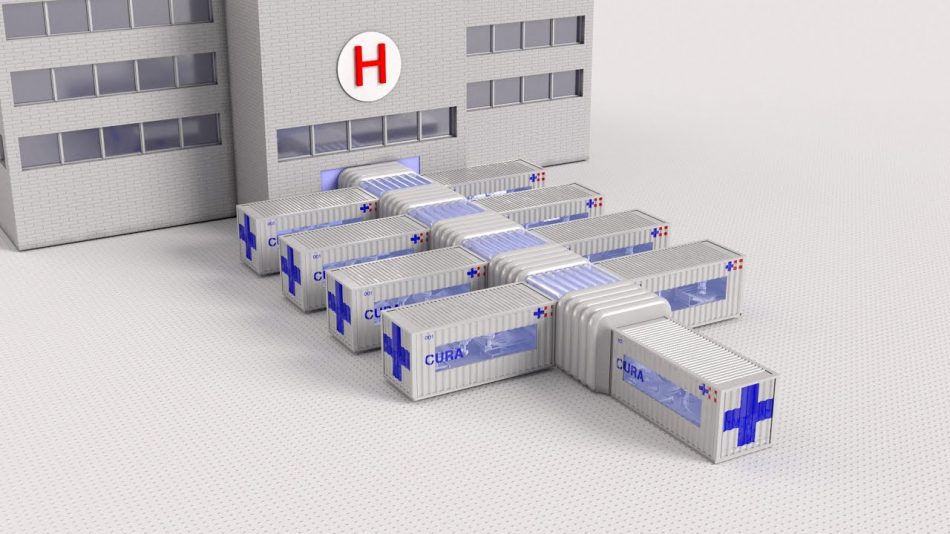Containers may have revolutionized the shipping industry but, lately, it seems that their efficiency is finding its use beyond freight transportation and towards ingenious healthcare units. Two days ago we wrote about a company that is using shipping containers as decontamination rooms to sanitize personal protective equipment so that frontline workers fighting the COVID-19 stay safe.
Now the large steel boxes could offer hospitals overwhelmed by the ongoing outbreak a much-needed capacity lifeline, thanks to an inventive retrofit design developed by an international force task.
In collaboration with an interdisciplinary group of professionals, innovation firm Carlo Ratti Associati (CRA) has unveiled a model that converts shipping containers into plug-in Intensive-Care Pods, as part of a larger open-source design project named CURA (Connected Units for Respiratory Ailments).
For quick deployment, the plug-in units will be repurposed from 20-foot-long shipping containers that can be easily transported anywhere around the world using existing transportation infrastructure. And according to the designers, CURA is as fast to set up like a tent “but as safe as an isolation ward, thanks to biocontainment with negative pressure” that complies with the standards of Airborne Infection Isolation Rooms.
The individual pods are all separated from each other but can be connected with inflatable structures to create multiple configurations ranging from four to over 40 beds. And, thanks to its modularity, the flexible design allows pods to be installed in close proximity to the hospitals in areas such as parking lots or as standalone, makeshift emergency hospitals in open fields and town squares.
As a ready-to-use solution, each CURA pod is equipped with all the medical equipment needed for two COVID-19 intensive-care patients — including ventilators and intravenous fluid strands — before deployment. The first CURA prototype is currently being built for testing at a Milan hospital.












